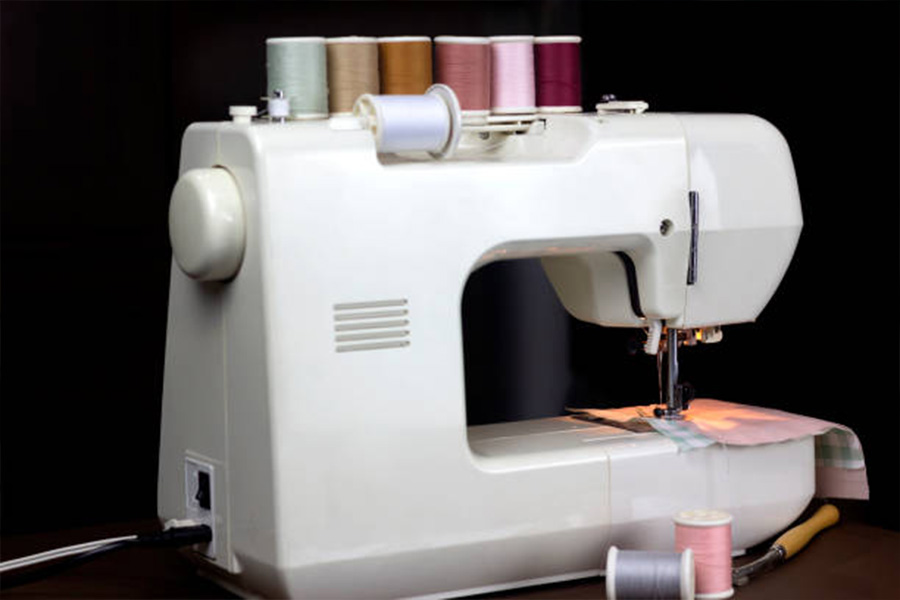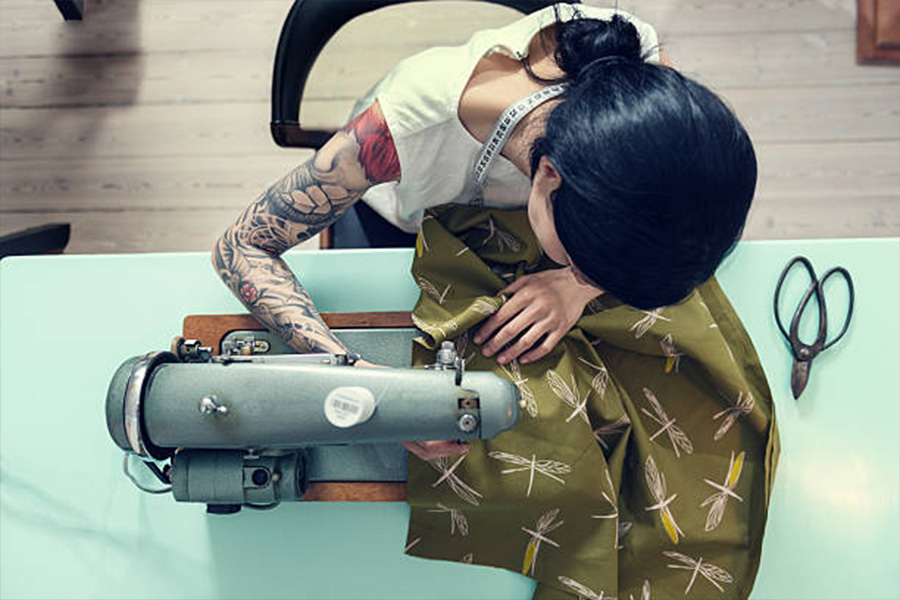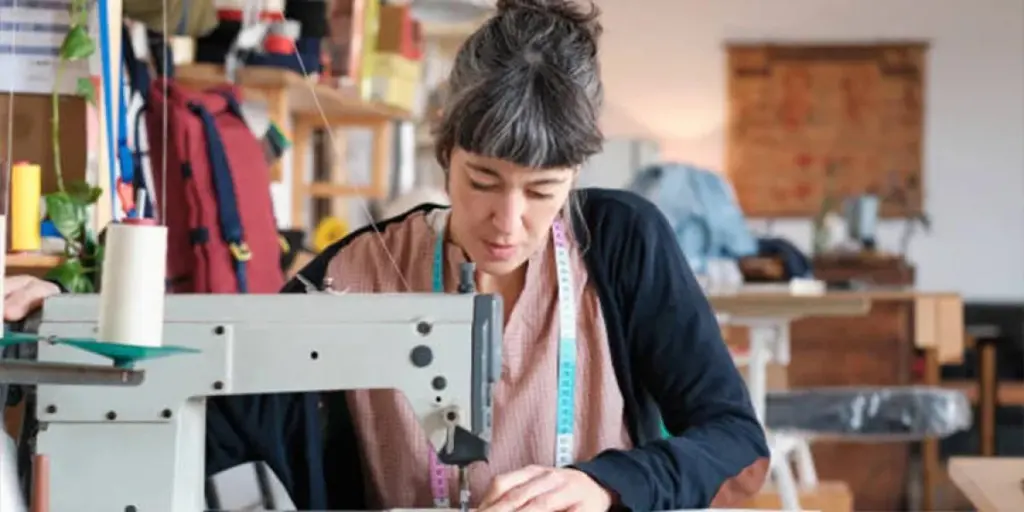A sewing machine and a serger serve the same purpose, which is sewing, but they are not the same. If you are new to the sewing journey, you have probably wondered which machine to acquire between the two. You are not alone, as many of us have been through the same path.
This article will look at how a sewing machine differs from a serger. Also, it will discuss the uses, pros, and cons of a serger and a sewing machine.
Table of Contents
What is a serger?
What is a sewing machine?
The difference between a sewing machine and a serger
Conclusion
What is a serger?

A serger is a specialized machine used for overcasting to prevent the fabric from fraying at the edge. It is also called an overlock sewing machine. The serger takes 3 to 8 cones of thread. As a result of the multiple threads being looped together, a serger is efficient and makes professional seams.
The threads lock around the seams, which prevents fraying. Additionally, it has a blade that cuts off the seam allowance while sewing. This process of trimming away seam allowances and encasing raw edges reaches approximately 1700 stitches per minute.
Uses
– Finishing hems and facing edges with the cover stitch
– Finishing seams
– Decorating fabrics by adding trims
– Gathering or adding a ruffle to garments
Pros
– It is fast in executing tasks because of the many thread paths that can function at once.
– It offers a range of specialized sewing tasks involving creating seams with encased edges.
– It creates secure and strong seams that cannot fray easily.
Cons
– It is small in shape and has a short neck, which hinders the handling of large-sized fabric while sewing.
– It has limited tasks as it cannot carry out functions like sewing buttonholes and setting a sleeve.
What is a sewing machine?

A sewing machine has a mechanically driven needle that sews or stitches several layers of fabric together using a thread. The machine sews zigzag stitches, straight stitches, and other complex patterns.
The sewing process involves the needle pulling a thread from the spool and pushing it in and out of the fabric as the machine runs. As the needle pushes through the bobbin, it uses a special hook to catch the thread and slide the bobbin thread through it. The process is complete when the threads on both sides are held, which creates stitches in the fabric.
Uses
– Sewing pieces of fabric together
– Repairing clothes
– Making stitches regular or smaller
– Adding durability to seams
– Readjusting garments to fit better
Pros
– The long-necked design gives more space to manipulate the fabric when stitching complex patterns.
– It can perform a broad range of tasks like sewing hems, facings, buttonholes, zippers, seams, and ruffles.
– It is designed with dozens of stitches.
Cons
– It is slower with the use of one spool of thread and one bobbin at a time or two at most.
– It cannot simultaneously sew a seam and encase the seam allowance edge.
– It cannot sew the stretchy overlock stitch.
The difference between a sewing machine and a serger
1. Number of threads required
Sewing machines use one spool of thread with a single bobbin to produce stitches. The double-needle sewing machines use two spools of thread. On the other hand, sergers draw from three to eight cones of thread simultaneously to make finished seams that do not fray easily.
2. Design
Sergers have a rack of tall top thread cones and use looper threads, while most sewing machines use one spool of thread and a single bobbin. Also, sewing machines assume a longer neck feature while sergers have a more squared design.
3. Number of stitches

Modern sewing machines are manufactured with dozens of stitches and can perform several tasks that sergers cannot. Meanwhile, sergers have limited kinds of stitches that can be used to perform different tasks.
4. Performance
Sergers and sewing machines have different stitching speeds. However, on average, sergers create more stitches per minute than basic sewing machines. While industrial sewing machines stitch between 1000 and 5000 stitches per minute, sergers create 1300 to 8000 stitches per minute.
5. Cutting knife
The cutting tool on a serger trims the seam allowance, which helps create a perfect finish while sewing. Achieving the same on a regular sewing machine involves several stages where the seam is sewn and then the fabric is removed from the machine to trim the seam allowance.
6. Speed

Speed determines the ease of learning how to use the different machines and how fast they complete a set of tasks. Sewing machines can easily be learned and used while threading with sergers might take a lot of work. To use sergers, you must learn how to use each thread path. Nonetheless, when it comes to completing tasks, the sergers are faster as they can perform various tasks simultaneously.
7. Cost
Sewing machines and sergers have a similar price range. The price changes with the complexity of the machine; for instance, a higher number of stitches would make sewing machines more expensive.
Conclusion
Buyers, in their sewing activities, stumble upon sergers. Some have been able to differentiate between a traditional sewing machine and a serger, while others have not. The above guide gives clear comparisons between a serger and a sewing machine for buyers to comprehend the differences in performance and make wise investments, as the machines cannot replace each other. To find quality sewing machines and sergers, visit Alibaba.com.




